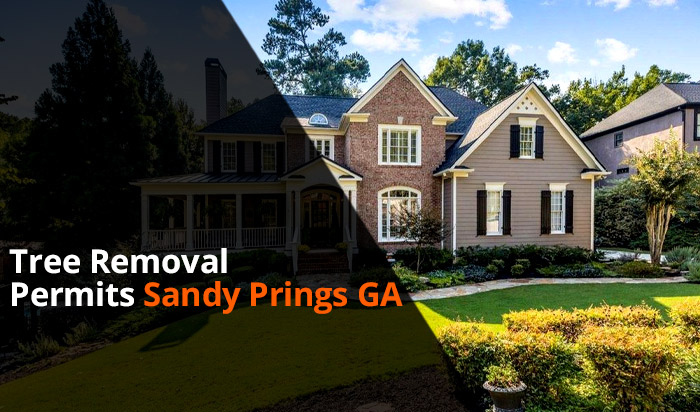Sandy Springs ordinance outlines tree removal guidelines in the city of Sandy Springs.
Yes, you do need a permit to remove trees within the city.
This article gives a clear understanding of how to go about the tree removal process and what trees require a permit. Find out more by reading through the Sandy Springs city codes.

What we cover
ToggleCan I remove any public tree without a permit in the city of Sandy Springs?
No. Any tree removal activity done in the city of Sandy Springs must be approved first before removal.
Do I need a permit to remove a tree in Sandy Springs?
Yes. Depending on the tree you want to remove, you need to get one. Get clarity from the city manager on the trees that need to be approved before removal.
How much does a tree removal permit cost in the City of Sandy Springs?
There is no cost attached to a tree removal permit. However, the only cost associated is in cases where you require canopy mitigation requirements. This applies when one is removing a landmark tree or in cases where tree replacement is needed to sustain canopy coverage.
When do I need a permit to remove my trees in Sandy Springs?
Different tree species require the owner to obtain a written permit. They include:
- Any hardwood or pine tree 18 inches in diameter at breast height or larger
- A Dogwood or Redbud 10 inches in diameter at breast height or larger
- Any tree located within Chattahoochee River Corridor or a Steam Buffer.
When is a tree removal permit not required in Sandy Springs?
The following trees growing on private property can be removed without a permit:
- Any hardwood or pine tree less than 18 inches in diameter at breast height
- Any Dogwood or Redbud tree less than 10 inches in diameter at breast height
- Any tree not located in a Steam Buffer
- Any tree growing on property, not in the River Corridor
Any tree that is dead, dying, or hazardous. It is essential to notify the city arborist and present appropriate evidence before removing the tree.
Who can apply for a tree removal permit in the city of Sandy Springs?
Any homeowner, property owner, or commercial tree removal company can apply to get a tree removal permit.
Tree removal permit application in Sandy Spring City
When applying for a tree removal permit, there is no application form to be filled out. You are to present a request that includes documentation showing the location, species, and approximate size of the tree. Include photos of the tree in the documentation.
Note that no fee is charged for a removal permit. The only cost you might incur is the canopy recompense requirements that are assessed if your site is under the minimum canopy requirements. The minimum canopy requirements are summarized below:
- Residential sites to maintain a canopy coverage of 35 percent made up of protected trees.
- Nonresidential properties to maintain canopy coverage of up to 40 percent.
What are Landmark trees in the city of Sandy Springs?
The city of Sandy Springs identifies the following trees as landmark trees:
- Any hardwood tree 27 inches in diameter at breast height or larger
- Any pine tree 30 inches in diameter at breast height or larger
- Any Dogwood or Redbud tree 10 inches in diameter at breast height or larger
If a landmark tree is removed, it is to be replaced at 150 percent of the lost canopy. This is to ensure enough canopy coverage for future purposes. The 150 percent canopy compensation is calculated on a square-foot basis.
How is canopy coverage calculated in the city of Sandy Springs?
The necessary canopy coverage calculations that you need to know are:
- Any protected trees that are 18 inches in diameter at breast height or larger, count towards 1,000 square feet canopy coverage.
- Landmark trees and protected Boundary trees receive extra as they count towards 1,250 square feet.
Ask the city arborist for assistance in calculating canopy coverage.
Who can apply for tree removal permit in Sandy Spring City?
Property owners, homeowners, and reliable tree removal company representatives can comfortably apply for a tree removal permit.
Tree Services by City in GA











